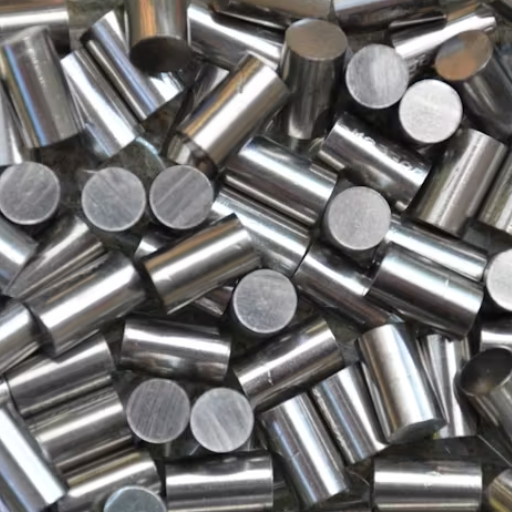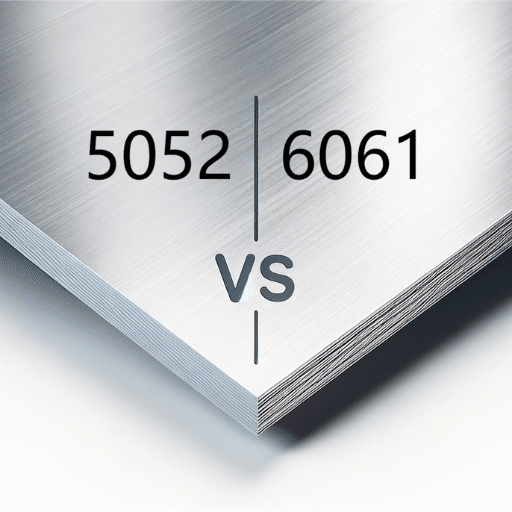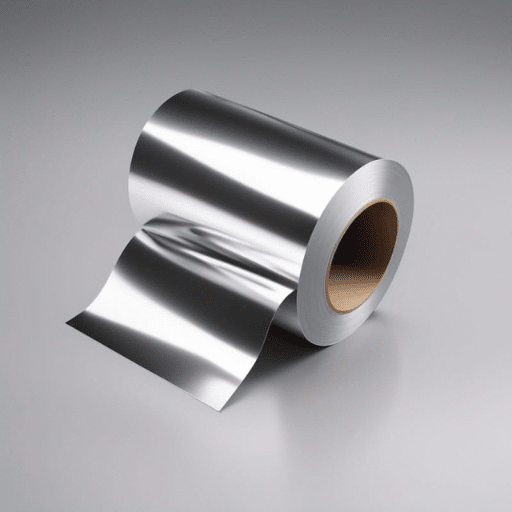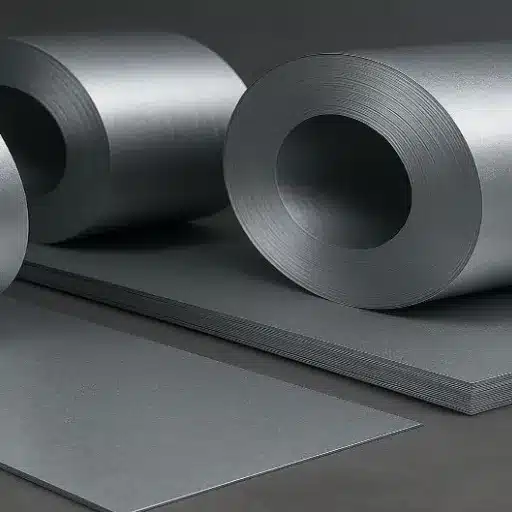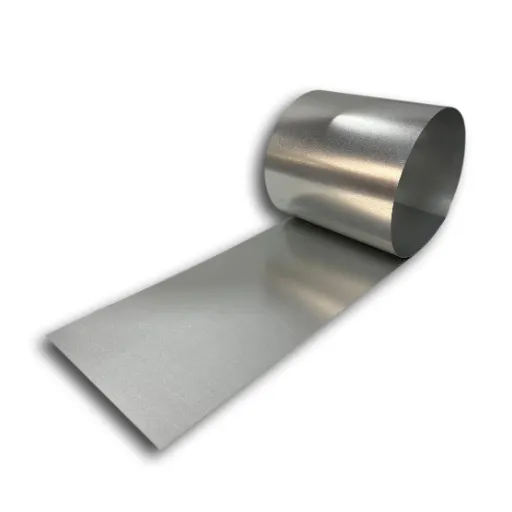Alloys are the cornerstones of modern engineering, vital in industries ranging from aerospace to medical devices. By blending two or more metallic elements, alloys achieve superior properties that are unattainable with pure metals alone. But not all alloys are created equal—they can be broadly classified into two fundamental categories, each with distinct characteristics and advantages. This article will explore these two basic types, shedding light on their unique properties, the science behind their development, and the wide-ranging applications that make them indispensable in today’s technological landscape. Whether you’re a materials scientist, an engineer, or simply curious about the critical role of alloys, this comprehensive guide will provide you with a deeper understanding of their mechanics and importance.
Understanding Alloys
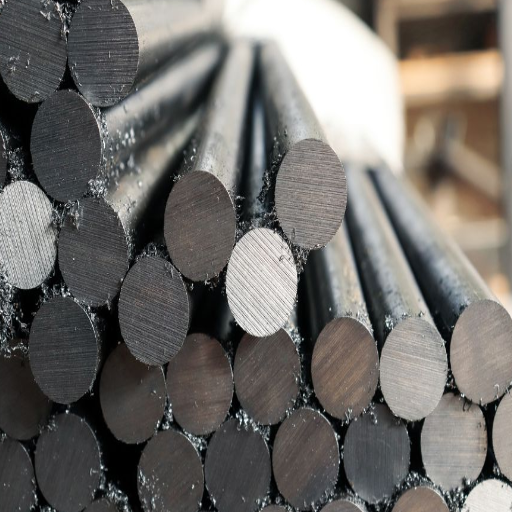
Definition of Alloys
An alloy is a mixture in the solid state of two or more elements in which one is at least a metal. An alloy is intended to combine the advantageous properties of the constituent elements, being their strength, corrosion resistance, or perhaps just general durability-in other words, properties that the individual metals or elements do not possess. Most often, the dominant metal within the mixture defines the problem of the alloy, such as steel being an iron-based alloy and brass being a copper-based alloy.
Depending on specific applications, an alloy is principally produced through different processes, generally by mixing the elements in a molten state and then cooling down and solidifying. This blending changes the microstructure of the base metal, providing materials with special mechanical, thermal, or chemical properties useful for specific applications. Depending on the composition, alloys may be primarily classified into two types: substitutional alloys, in which atoms of the secondary element substitute atoms of the base metal, and interstitial alloys, in which smaller atoms fit interstitially among atoms of the base metal in the structure.
In innumerable applications, alloys have been employed with great success. Steel is applied greatly to construction because of its strength and versatility, while aluminum alloys are preferred in aerospace due to their lightness and demand for performance. Hence, understanding alloys is important for bettering engineering, manufacturing, and other fields to work at the cutting edge.
Difference Between Pure Metals and Metal Alloys
Pure metals are substances with only one type of element and an unvarying atomic structure. Some examples are copper, iron, and aluminum in their elemental forms. Usually, these metals will express predictable and uniform properties, such as copper exhibiting high electrical conductivity or gold being malleable. On the other hand, a pure metal may exhibit weaknesses such as low mechanical strength or corrosion susceptibility that hinder its practical applications in the field.
Metal alloys, conversely, are mixtures of two or more elements, at least one being a metal. The chief purpose of alloying is to improve the properties of the base metal. For instance, a very tiny proportion of carbon added to pure iron helps manufacture steel, wherein strength and hardness have been increased manifold in comparison to pure iron. By choosing the right mix, alloys can be formed to give improved properties like wear resistance or a certain thermal or electrical property, therefore catering to unique requirements such as aerospace parts or medical devices.
The one key difference lies in the profile of their performances. While a pure metal might be excellent for straightforward needs requiring high conductivity or pure malleability, alloys are custom-made for the more complicated and demanding end of the scale. That versatility is what makes metal alloys indispensable in present-day technology and infrastructure, wherein an often-even property rating is required, something for which pure metals may not serve well.
Importance of Alloys in Modern Applications
According to contemporary applications, alloys were considered critical because they can fulfill certain performance requirements that pure metals cannot. They are supposed to improve strength, durability, corrosion resistance, or other such properties that make them coaches for diverse industries. This kind of versatility and custom aspects of the alloys enable changes in technology, construction, and engineering. Below are examples that underline the importance of alloys in various markets:
- Aerospace Industry: Aluminum-lithium alloys and titanium alloys, among others, find stunning utility in aerospace applications. They present the finest balance of lightest properties and maximum strength to allow for minimal aircraft weight without compromising structural integrity. For superalloys, nickel-based types are generally applied massively to jet engine components due to their capability of resisting very high temperatures and exerting almost no mechanical deformation at high temperatures.
- Automotive Application: Steel and aluminum alloys ensure the safety and fuel efficiency of vehicles. High-strength low-alloy steels are used for car frames because of their excellent strength-to-weight ratio. This helps in reducing the vehicle weight, thus enhancing fuel efficiency and lowering exhaust.
- Construction Industry: Stainless steel, an alloy of iron, chromium, and other elements, is considered essential for construction applications because of its corrosion resistance and durability. It is used extensively in infrastructure, such as bridges, tall buildings, and architectural designs. In addition, weathering steel is used for outdoor structures due to its protective oxide layer that reduces rusting.
- Medical Devices and Equipment: Such alloy-improved titanium has many applications in the medical field due to its biocompatibility, high strength, and corrosion resistance Few implementations for implants, prosthetics, and surgical instrumentation require it to work reliably in highly sensitive environments.
- Electronics and Telecommunications: Copper alloys, including bronze and brass, find application in electrical and telecommunications systems. These materials possess excellent conductivity, good resistance to wear, and are suitable for use in wire, connectors, and components of circuits.
Therefore, such examples are being presented to demonstrate the critical roles played by alloys across various fields to fuel innovations and enhancements with regard to the reliability and efficiency of modern-day technology. Their ongoing development responds to the ever-evolving requirements of industrial and consumer situations.
Types of Alloys
Substitutional Alloys: Characteristics and Formation
When considering substitutional alloys, atoms of a solute metal enter the crystal lattice of a solvent metal by replacing the solvent metal atoms. Such substitution generally arises when the metal atoms of the constituent metals are very similar in terms of their atomic radii (usually within 15%) and also have similar electronegativities and valence electronic configurations. These are the necessary criteria that allow atoms to fit into the host lattice without causing substantial distortion or instability.
Substitutional alloys exhibit properties that depend largely upon the ratio and type of elements present. For example, brass (copper and zinc) shows better strength and corrosion resistance than either of the parent metals, while bronze (copper and tin) is famous for hardness and wear resistance. Thus, this great variety is employed in structural applications, electrical parts, and corrosion-resistant materials.
From the technological point of view, substitutional alloys have constituted a great development in the field of engineering and manufacturing. Modern material scientists can variably adjust their mechanical, thermal, and electrical properties to match an industrial requirement with a precise composition. This adaptability of substitutional alloys constitutes the very foundation of technological advancement in different fields.
Interstitial Alloys: Characteristics and Formation
Interstitial alloys are formed when slightly smaller atoms occupy the voids, or interstices, in the slightly larger metal atoms of the crystal lattice structure. This type of alloy mostly involves non-metal elements, such as carbon or nitrogen, whose atomic radii are much smaller than those of the host metal atoms. These non-metallic interstitial atoms tend to strengthen the lattice by conferring special mechanical properties. A common example would be carbon in iron; such an alloy, known as steel, is far harder and stronger than pure iron.
For the formation of interstitial alloys, it is very much a question of the size relationship between the two atoms and the crystal structure of the host metal. The smaller atoms have to be small enough to just fit into the interstices of the lattice with little distortion, as this would greatly weaken the lattice. When this perfect fit is attained, the metal is strengthened, yet it is more resistant to deformation and harder.
In general, interstitial alloys can be engineered to have the desired physical and chemical properties required by specific engineering applications. By modulating the atomic proportion, formation temperature, and bond strength, these alloys can be modified to accommodate a multitude of uses in construction, aerospace, and automotive manufacturing.
Comparison of Substitutional and Interstitial Alloys
A substitutional and interstitial alloy shows some structural differences that also influence its physical properties and the industries of application. In the case of substitutional alloys, atoms of the secondary element replace or substitute the host metal atoms within the crystal lattice. Generally, the substitution occurs if both elements have a similar atomic radius and electronegativity to maintain structural stability. This usually leads to an alloy characteristically having better ductility, electrical conductivity, and corrosion resistance, properties used in electrotechnology and marine engineering. Examples are brass (copper and zinc) and bronze (copper and tin).
On the other hand, interstitial alloys occur when atoms smaller in size, like carbon or nitrogen, occupy the space in-between the atoms of the larger host metal. Interstitial alloys normally exhibit higher hardness, tensile strength, and resistance to deformation due to their special atomic arrangement. Such properties are advantageous in making cutting tools, automobile parts, and construction materials, requiring high the best example being steel (iron and carbon).
The mechanical and chemical properties of these alloys can be tailored further via processes like heat treatment, variation of alloying elements, and surface engineering. For instance, with recent advancements, nano-alloying technology would give far better control over atomic arrangements, producing materials for high-performance applications. With this kind of refined tailoring, both substitutional and interstitial alloys are always at the forefront in challenging all existing engineering and manufacturing technologies.
Common Alloys and Their Applications
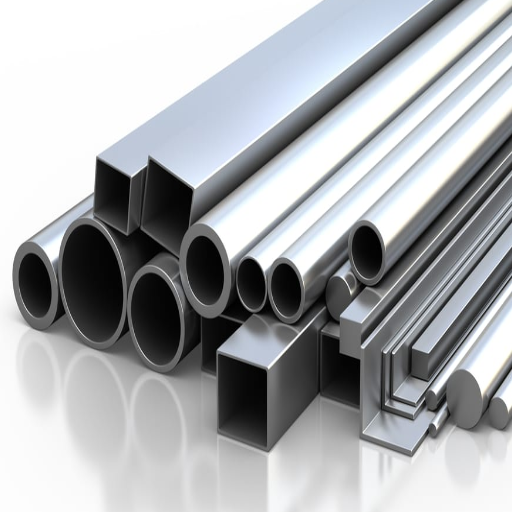
Brass: A Widely Used Alloy
Brass is a very versatile alloy with copper and zinc being the main constituents, although its composition varies depending on the use it is put to. Different proportions of copper and zinc are utilized to either strengthen the alloy, resist corrosion, work well during machining, or conduct heat. Usually, brass is by a large copper composition, about 60-70%, with about 30-40% zinc, but sometimes additional chemicals like lead, aluminum, or tin are added to improve machining or resist wear.
Since this alloy exhibits a combination of mechanical and decorative properties, it finds widespread application in many fields. For instance, due to its corrosion resistance, it is used for marine hardware, while electrical connectors and terminals are made out of it because of its excellent conductivity. Its fabrication is relatively easy to allow its use in industrial parts like gears, valves, and fittings. Moreover, it has acoustic properties, making it suitable for musical instruments where precise sound is paramount.
In the quest for a better brass alloy, metallurgical engineering advancements have paved way for eco-friendly lead-free grades for use in situations where safety and environmental norms are of the utmost importance. This kind of brass composition ensures that this alloy will continue to find use in engineering, manufacturing, and consumer goods sectors.
Steel: The Backbone of Construction and Manufacturing
Steel is critical in today’s construction and manufacturing industries because of the extraordinary aspects of its mechanical strength properties, with high flexibility adaptations made for diverse applications. Being an alloy, steel comprises mostly iron and carbon with some minor elements such as manganese, chromium, or nickel in it, providing it with very high tensile strengths and giving good durability and resistance to deformation when stressed. Thus, it finds usage in building structural frameworks, bridges, machinery, automotive installations, and many more essential infrastructures.
In the past few decades, steel manufacturing gained from the introduction of EAF and continuous casting, by means of which improvements were made in steel production with regard to efficiency, cost-effectiveness, and sustainability considerations. Recycling steel is the process whereby millions of tons of scrap metal are reused every year, thus saving energy and reducing greenhouse gas emissions as compared to the production of primary steel. Engineers now continuously specify more demanding material performances, ranging from corrosion resistance in arduous environments to weight savings for aerospace and automotive applications, through the development and utilization of specialty steel grades such as HSLA steels or stainless steels.
Steel remains and will remain one of the driving forces in world industrial development due to its availability and the diversity of properties it has to offer, and the coverage of innovative solutions for problems of smart cities, renewable energy, and contemporary infrastructure development.
Other Notable Metal Alloys in Various Industries
Metal alloys play an indispensable role in the performance and functionality of modern industrial systems can exploit. Titanian alloys are largely used wherever high strength-to-weight ratio and corrosion resistance are demanded-namely aerospace, medical implants, and shipbuilding. Good strength with low density has always been a highly selected engineering criterion wherever an attempt to reduce structural mass has ever been made without compromising on the performance of the structure in question.
These are at their mediation temperature and exceptionally higher at temperatures, typically over 1800°F (982°C), to maintain mechanical integrity and resist oxidation and make an important application right at the building of power generation and aviation systems. The descriptions under superlative alloys prepare this statement.
Aluminum alloys have always been sought in automotive, construction, and consumer electronics. They are light and resist corrosion, properties that favor energy-efficient vehicles and durable electronic gadgets. The advent of aluminum-lithium alloys has further improved strength-to-weight properties, thus promoting the evolution of aircraft and spacecraft.
Brass and bronze are just a few copper-based alloys that remain pertinent in a gamut of applications due to their thermal and electrical conductivities. Their special properties get used in industries such as electrical wiring, telecommunications, and even in antimicrobial touch surfaces in hospital environments.
The metal alloys are one of the prime considerations in material science and keep on evolving to meet the ever-changing demand of modern industry. Ensured by tailor-making their properties through state-of-the-art metallurgical processes, these alloys shall remain relevant in this endeavor in pushing technological and industrial frontiers onward.
The Science Behind Alloy Formation
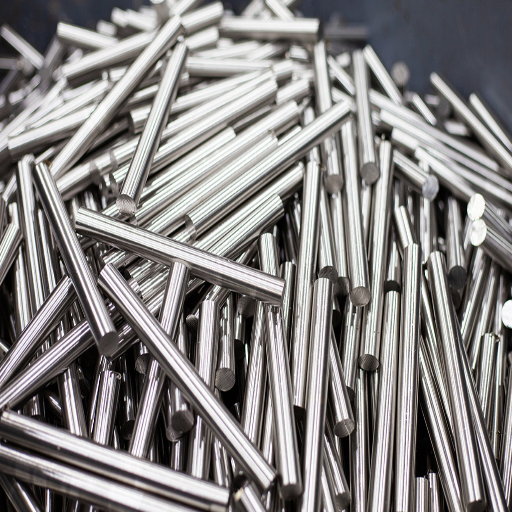
Atomic Structure and Metal Bonding
Metal bonding is very basic to the understanding of how alloys form and what properties they will have. Metals are made up of atoms that are tightly packed in a certain arrangement that is generally crystalline. Three principal lattice structures find place in metal arrangements: body-centered cubic (BCC), face-centered cubic (FCC), and hexagonal close-packed (HCP). These crystal structures are responsible for the density, strength, ductility, and thermal conductivity of the metal.
Metallic bonding originates from free electrons that are shared among a grid of positive metal ions. According to the “electron sea model,” this type of bonding accounts for many notable properties of metals, such as conductivity and malleability, and luster. The malleability, for example, is due to the ability of the layers of atoms within the lattice to slide past each other without breaking metallic bonds.
The atomic properties of different elements interact with each other in the alloying process, thus changing the parent lattice either by replacement or by an interstitial fashion of one set of atoms with the other. The interaction between atoms of different size, electronegativity, and valency significantly influences the microstructure and mechanical properties of an alloy. Advanced characterization techniques, such as electron microscopy and X-ray diffraction, give valuable clues on these atomic configurations, thus helping to fine-tune the design and application of alloys.
Interplay of Different Elements in Alloy Creation
An alloy’s behavior is primarily defined by the intrinsic properties of all elements from which it is composed and their interaction within a metallurgical matrix. Atomic radii, electronegativity, and valence electron configurations of the elements, for instance, are vital in imparting strength, hardness, or ductility to an alloy. Elements that are highly soluble in the base metal are likely to form solid solutions, while those of low solubility usually induce precipitation strengthening by forming second-phase particles. Carbon, being a typical interstitial element in steel alloys, provides some of the highest tensile strength improvements by way of phase transformations and carbide formation.
Today`s metallurgical engineers use thermodynamic modeling tools to predict phase stability and transformation behavior in multicomponent alloys, thus enabling high-throughput alloy design along with material-tailoring for a particular use case scenario. The selectivity in alloying element additions is carried down to the superalloy realm, where very small additions of tantalum or rhenium can be made to optimize high-temperature strength and creep resistance.
Using this information and the results of experiments, alloys are again formulated with continuous performance improvements, thereby having a direct impact on industries such as aerospace, automotive, and energy. This cyclic iteration between elemental, atomic, and macroscopic behavior marks the undying relevance of elements moving in unison in the realms of alloy innovation.
How Alloy Properties are Enhanced
The properties of alloys are enhanced via composite modifications of concentration treatments and surface engineering techniques. An alloy is a substance composed of one or more base metals and trace elements. By changing the relative concentration of one or more constituents, its physical and mechanical properties, such as tensile strength, ductility, and corrosion resistance, as well as thermal stability, can be altered. For example, the control of elements such as chromium and molybdenum will significantly improve the corrosion resistance of stainless steels, while aluminum and titanium will provide aerospace-grade alloys with good weight-to-strength ratios.
Thermomechanical treatments, also considered all-important methods of microstructure alteration, can be processes such as annealing, quenching, and tempering. Various properties, such as grain refinement, hardness, and resistance to wear and fatigue, will be improved in the alloy system by the phase transformations incorporated into the material. Nowadays, special techniques like cryogenic processing are being studied that will improve dimensional stability and resistance to stresses at the molecular level.
Lastly, the surface engineering techniques will improve functional properties at the alloy surface. PVD, CVD, and plasma nitriding will provide an extra layer of resistance to wear and oxidation, thereby increasing the operational lifespan of components exposed to harsh environments. Together, these methodologies form a multipronged approach to alloy design and development, thus allowing for the crafting of materials to respond to the stringent demands of modern industrial applications.
Industries Reliant on Alloys
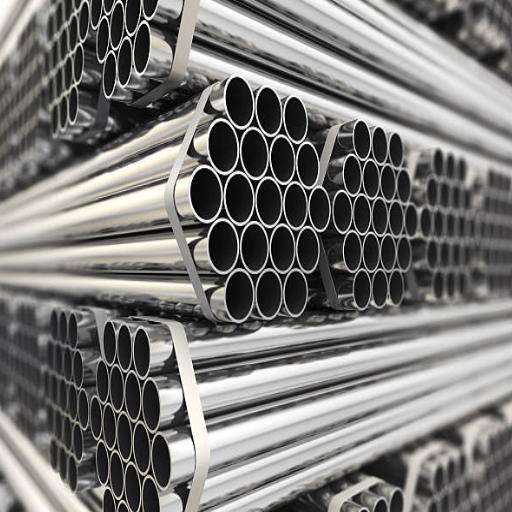
Aerospace Applications of Metal Alloys
Metal alloys are essential to the aerospace industry because of their ideal strength-to-weight ratios, corrosion resistance, and ability to withstand relatively high temperatures. And they make alloys crucial for aerospace components to achieve performance and ensure safety. Some major applications are as follows:
- Aircraft Fuselages: Aluminum alloys like AA7075 and AA2024 are being employed in aircraft fuselages because of their lightweight and strength. These alloys provide greater tensile strength for lesser weight, thereby increasing the economic efficiency of the aircraft. For example, the alloy AA7075 has been reported to reach a tensile strength of 572 MPa.
- Jet Engine Components: Nickel-based superalloys, such as IN718 and Rene 41, dominate jet engine manufacturing. These materials are designed to withstand extreme temperatures and mechanical stress in turbine blades and combustor sections. For example, IN718 retains its mechanical properties to a temperature of around 700°C.
- Spacecraft Structures: Titanium alloys such as Ti-6Al-4V are used for spacecraft because of their dependability in harsh conditions. These are high-strength, corrosion-resistant alloys crucial for long-term space missions. Ti-6Al-4V shows tensile strength of about 895 MPa.
- Landing Gear Systems: Steel alloys, such as 4340 and 300M, are employed in building landing gear systems because of their high fatigue resistance and load-bearing properties. 300M steel can be classified as an ultra-high-strength low-alloy steel that offers exceptionally high toughness and superior fracture resistance.
- Thermal Protection Systems: For re-entry vehicles and space shuttles, refractory metal alloys, including molybdenum and tungsten composites, provide critical thermal protection. These alloys retain structural integrity above 2,000°C to ensure the safe return of a spacecraft through the Earth’s atmosphere.
The strategic deployment of these alloys for aerospace use emphasizes their legitimacy in the promotion of technological innovation while strictly adhering to safety and performance standards.
Automotive Industry: The Role of Alloys
Advanced alloys are of paramount importance in the automotive industry since they enhance performance, safety, and fuel efficiency. These special properties of alloys are imparted from high strength-to-weight ratios, resistance to corrosion, and thermal stability, to name a few, allowing the manufacturers to design very light vehicles that satisfy stringent environmental regulations yet maintain durability and safety. The typical alloys used in the automotive industry include:
- Aluminum Alloys: Aluminum alloys are used predominantly for vehicle frames, engine blocks, and body panels. These alloys render a vehicle very lightweight, thereby ensuring fuel consumption is optimal without sacrificing strength. The 6000 series of aluminum alloys, for example, is used in structural applications due to its excellent corrosion resistance and good tensile strength.
- Steel Alloys: High-strength steel alloys are necessary in producing critical safety components, including chassis and crash zones. Advanced high-strength steels (AHSS), including martensitic and dual-phase steels, provide the ability to absorb energy in collisions, protecting passengers.
- Magnesium Alloys: Magnesium alloys such as AZ91D are frequently used in manufacturing steering wheel components, gearboxes, and automotive seats. Their lightweight character improves fuel economy, while their damping properties reduce vibration and noise.
- Titanium Alloys: By their high strength-to-weight ratio and excellent corrosion resistance, titanium alloys have found increasing applications in high-performance vehicles in exhaust systems and valve springs. Ti-6Al-4V, in particular, is a very popular titanium alloy due to its high-temperature resistance and fatigue strength.
- Copper Alloys: Copper and copper alloys are used extensively for wiring and electrical connectors in automotive electrical systems. Copper is distinguished by its exceptional electrical conductivity, which ensures that there are no losses when operating electronic control units, sensors, and electric motors, all very important in today’s electric vehicles (EVs).
Each one of these alloys is proof of the dependence of the industry on modern advanced materials to meet modern-day demands of performance and sustainability. As alloy science advances further yet, the future will mark safer, lighter, and more fuel-efficient vehicles.
Construction and Structural Uses of Alloys
Alloys have great importance in modern constructions and structural engineering, primarily because of their superior mechanical properties, corrosion resistance, and versatility when compared to pure metals. For example, steel, an alloy of iron and carbon, is the principal material in constructing skyscrapers, bridges, and industrial buildings due to its tensile strength and durability. Advanced kinds of steel, such as weathering steel, are purposely developed to resist environmental degradation by forming a protective oxide layer on their surface and thereby lessening the dependence on regular maintenance.
Aluminum alloys find applications in architecture where strength and lightness are of major concern, such as curtain walls, roofing systems, and window frames. Likewise, titanium alloys are increasingly finding their way into specialized structural projects, including seismic-resistant construction and structures with severe service loadings, due to their excellent strength-to-weight ratio and capacity to resist extreme temperatures.
The further use of these advanced alloys is fuelled by emerging research on nanostructured and high-entropy alloys, which creates new promises for even better performances. These materials are designed at the microstructural level to improve certain aspects pertinent to modern architectures, such as load-bearing capacities and energy absorption. Thus, the alloys continue to provide the backbone for pushing forward construction technologies toward safer and more sustainable built environments for tomorrow.
References
-
Metals & Alloys – Rice University
This source discusses the two fundamental types of alloys: substitutional and interstitial. -
Types of Metal Alloys – Penn State University
This e-textbook provides insights into metal alloys, including their classification and properties. -
Alloy Definitions – Princeton University
This resource explores binary alloys and their formation in thermodynamic equilibrium.
Frequently Asked Questions (FAQ)
Q: What are the two basic types of alloys?
A: The two basic types of alloys are substitutional alloys and interstitial alloys. Substitutional alloys are formed by replacing some of the atoms of the base metal with other elements, while interstitial alloys involve smaller atoms fitting into the spaces between the larger atoms of the base metal.
Q: How are alloys like steel significant in metallurgy?
A: Alloys like steel are significant in metallurgy because they combine different properties of metals to enhance performance. For instance, steel is an alloy made primarily from iron and carbon, which improves its hardness and strength, making it suitable for various applications.
Q: Can you give examples of common alloys used in the automotive industry?
A: Yes, common alloys used in the automotive industry include aluminum alloys and steel alloys. These alloys are known for their strength and lightweight properties, which are essential for fuel efficiency and vehicle performance.
Q: What is the role of nickel in certain alloys?
A: Nickel plays a crucial role in certain alloys, particularly stainless steel, where it enhances corrosion resistance and strength. The addition of nickel allows the alloy to maintain its integrity in high-temperature environments, making it ideal for various applications.
Q: How do aluminum alloys differ from traditional pure metals?
A: Aluminum alloys differ from traditional pure metals in that they contain other elements that enhance specific properties, such as strength, corrosion resistance, and malleability. This makes aluminum alloys widely used in industries like aerospace and automotive.
Q: What is an example of an interstitial alloy?
A: An example of an interstitial alloy is steel, which is created by adding small amounts of carbon to iron. The carbon atoms occupy the interstitial spaces in the iron lattice, resulting in a stronger and harder material.
Q: How do different properties of alloys affect their applications?
A: The different properties of alloys, such as hardness, conductivity, and corrosion resistance, directly influence their applications. For example, alloys with high strength and low weight are preferred in aerospace, while those with high corrosion resistance are used in medical devices.
Q: Why are alloys considered essential in materials science?
A: Alloys are considered essential in materials science because they allow the combination of various elements to create materials with tailored properties for specific applications. This versatility enables the development of new materials that meet the demands of modern technology and industry.

